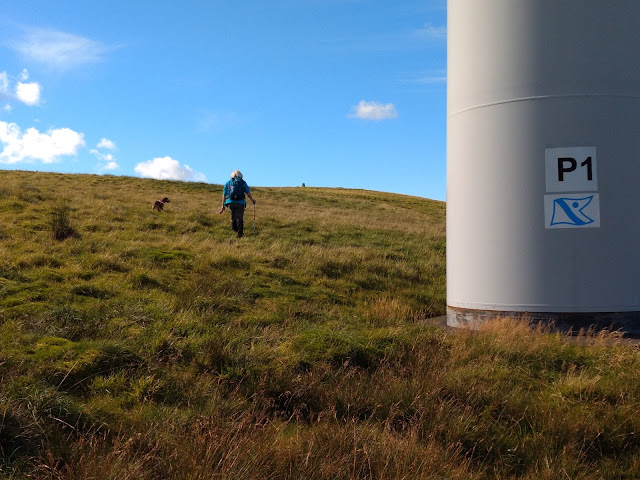GM/SS-282 East Cairn Hill 05 August 2020
In early August 2020 we had a mid-week break in the Scottish Borders with a view to activating four summits - however due to becoming sick with food poisoning on day two, I completed two out of four summits, leaving Wether Law and Broad Law for another day...
This was the first chance we had of getting out of England to activate some unique summits since we stayed at Gatehouse of Fleet in early January. The spread of Covid-19 in March through to the summer prevented any chance of going to Scotland or Wales. A SOTA tour booked in January to the Czech Republic in April was cancelled, as were other holidays in Mallorca (May) and Austria (July). I won't be activating outside the UK until things improve and the continuing spread of the pandemic is stopped.
Our arrival on the Tuesday in pouring rain did not bode well and Wednesday was not much better, however taking a chance we set off well after breakfast to the Pentland Hills, around 25 miles north of our hotel. I hadn't activated in the Pentlands before and GM/SS-282 East Cairn Hill was chosen as one to do in a single day outing, being around a 7 mile return walk from Badingsgill Farm along "Thieves Road", the Cross Borders Drovers Road. I was accompanied by XYL Judy and our dog Treacle. Parking with permission was given at the Sawmill, grid reference NT126548. The route started on tarmac, went to a track once Badingsgill Reservoir was reached, and then later earth. The air was damp and when we turned right at Cauldstane Slap NT117588 and it started to rain.
Cauldstane Slap with East Cairn Hill in the background
We followed the fence running north east and pitched the HF station at the col and fence corner between the 561m and 567m "double top". The col falls to 548m so it was well within the activation zone. A 5m pole was used with an inverted vee dipole and Elecraft KX2. Due to the incessant rain only 14 MHz (20m) CW was used. I was forced to close the station down after ten contacts when callers ceased, to protect my transceiver.
Miserable conditions on the summit for Judy & TreacleXYL Judy, Treacle and I beat a hasty retreat back to the car and it rained all the way back. I was soaked to the skin despite my Paramor Coat being re-proofed the last time it was washed. Judy's Berghaus jacket kept the rain out, compared to my ten years old Paramo - I think it may be due for replacement.
GM/SS-195 Mendick Hill 06 August 2020
The weather was much better and after a fated cooked breakfast we headed north again to the Pentlands Hills near Edinburgh. The plan was to activate both Mendick Hill and then Wether Law. In the event, a bout of sickness and diarrhoea which came on me at 2.00pm shortened our day in the Pentland Hills....
©Crown copyright 2020 Ordnance Survey Media 010/20
We parked just off the A702 NT109479 and made our way along the waymarked footpath to West Linton. I was following a route through a sand quarry provided by my friend Terry, G0VWP. We left the path near some large plastic greenhouses below us and headed over Ingraston Hill, contouring round to approach the summit of Mendick Hill from the south. There were a few gates along the way and tussocky and rough ground in places.
The memorial bench on the summit, a metre down from the trig, was very useful and that is where I set up my station. Before calling for stations on HF I gave a call on 2m FM with my handheld and whip and worked Colwyn MM0YCJ/P on SS-184 Middlefield Law, some 50 Km distant. I followed on with a contact with Steve MM0XPZ near Greenock and finally Andy MM0FMF over the hill towards Edinburgh, before moving to the KX2 on HF to make a further 24 contacts in Morse and Voice.
Having joined a proper path near the top we opted to follow that down. It was a little further to walk but a good surface on which to walk, albeit it was steeper - but as we were heading downhill that wasn't important. We rejoined the West Linton path almost 2 Km north east of where we had left it on our way up. Its always good to follow a different route down and map it if it is a practical alternative, and this was.
After a sandwich we drove to Halmyre House, the parking place for GM/SS-177 Wether Law, however by the time we got there I felt too ill from the food poisoning and had no choice but to return to the hotel, albeit with several stops along the way.
I will return to the area later in the year, to activate Wether Law.





















































